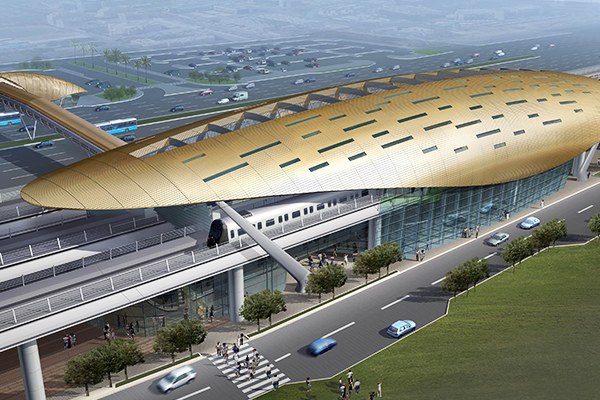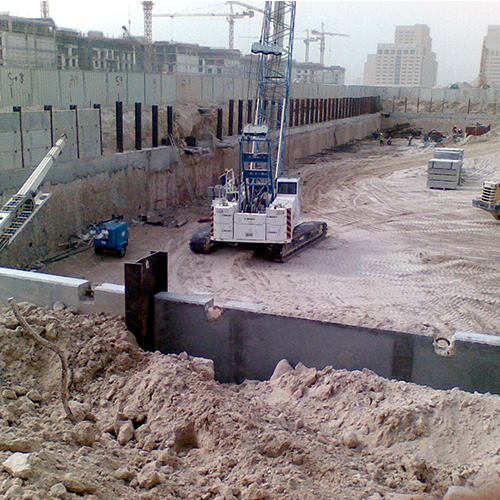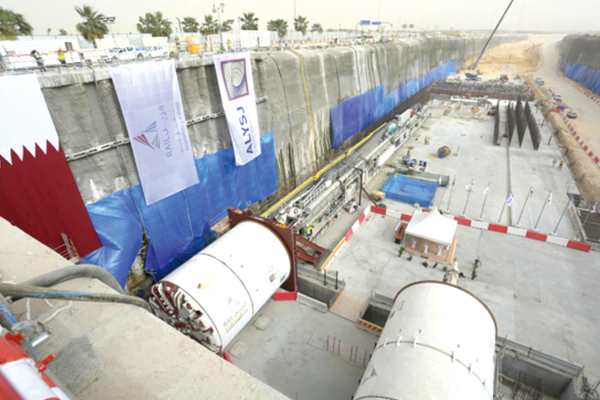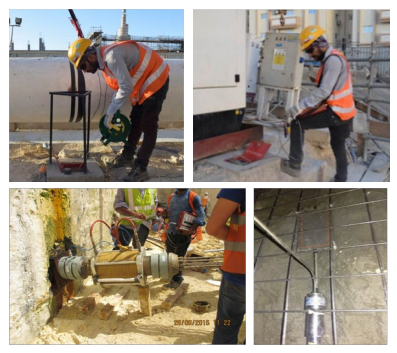The establishment of the metro not only solves the problem of traffic and pollution but also promotes integrated development among different regions. Metros are celebrated by the residents, as it greatly helps to reduce the distance across the city. Being pulled closer with the help of advanced technology, it is only fair to do it correctly.
The construction of a metro brings many concerns into action. Since the metro runs from various areas, it is crucial to judge, monitor, and provide remedies for the effective construction of long metro tracks. This is where geotechnical monitoring and instrumentation come into play. It helps to mitigate the risk to life and property while keeping the surroundings safe.
Since most of the metros run through underground tunnels, it becomes important to monitor them. While constructing tunnels, geotechnical monitoring is of utmost importance. It assists in assuring the stability and strength of the tunnel, certifying the design, and assessing the intensity and sequence of the operations involved during construction.
Encardio Rite, a leading geotechnical and instrumentation company, was associated with the construction phase of the prestigious Doha Metro and provided its robust instruments and monitoring services. Let’s have a look at how it was done.
Doha Metro Project Overview

The Doha Metro is a key project of the Qatar National Vision of 2030. Situated in the capital city of Qatar, the Doha metro has three lines with an approximate length of 76km serving 37 stations. A part of the larger Qatar Rail Network, it is expected to expand, linking Qatar to the GCC, and the Lusail LRT. The Red, Gold, and Green lines has become operational in 2019, while the larger plan of an additional line (Blue) and the expansion of the existing ones, with more than 60 stations are expected to complete by 2026.
Encardio Rite Monitoring Solutions for the Doha Metro Project

Owing to Encardio Rite’s proven track record in managing the monitoring of esteemed metro projects globally and providing quality and diversity of technologies, it was offered a contract for all 4 packages. These included Major stations – Msheireb and Education City, Gold Line – 13.50 km, Green Line – 16.60 km, Red Line South – 12.05 km, and Red Line North – 11.30 km.
It was entrusted with instrumentation & monitoring of the project along with pre/post-construction condition survey of structures and supply and installation of geotechnical instruments.
Encardio Rite Turnkey Services for Doha Metro Project
Encardio Rite provided the following turnkey solution for each of the Doha Metro lines.

Major stations
- Pre-construction building condition survey of the structures within the zone of influence.
- Supply of geotechnical instruments, precise survey instruments, and targets.
- Installation of geotechnical instruments including the drilling works for subsurface instruments and survey targets.
- Manual and automatic monitoring.
- Optical Surveying-precise leveling & 3D deformation monitoring.
- Programming and commissioning of data acquisition systems.
- Setting up an online web-based data management system (WDMS) and maintenance during the contract period.
- Spiral test for inclinometer installed in soil.
- Daily & weekly reporting with evaluation & interpretation.
- Calibration of data loggers and sensors.
- Post-construction building condition survey.
Gold Line
- Before excavation and tunneling, pre-construction condition surveys were carried out on buildings within the zone of influence along the route and stations of almost 790 structures & 3400 utilities. Key building monitoring points were installed and actions were taken to ensure that all work was carried out under the safest conditions as for tunneling works, safety is paramount.
- After the construction work was over, a post-construction condition survey was carried out for the same structures and utilities.
- Instrumentation and monitoring of the alignment of the tunnel (13.5 km) and 10 stations that included:
- Online web data monitoring with automated monitoring as per requirement.
- Supply of geotechnical instruments, precise survey instruments, and targets.
- Installation of geotechnical instruments including the drilling work for subsurface instruments and survey targets.
- Manual and automatic monitoring.
- Optical Surveying-precise leveling & 3D deformation monitoring.
- Programming and commissioning of automatic data loggers
- Calibration of data loggers and sensors.
Green Line
- Pre and post-construction building condition survey, Structural Survey, and Building monitoring.
- Supply of geotechnical instruments, precise survey instruments, and targets.
- Installation of geotechnical instruments including the drilling works for subsurface instruments and survey targets.
- Manual and automatic monitoring.
- Optical Surveying-precise leveling & 3D deformation monitoring.
- Daily, weekly and monthly reporting with data evaluation & interpretation.
- Programming and commissioning of automatic data loggers.
- Calibration of data loggers and sensors.
Red Line
- Pre and post-construction building condition survey
Geotechnical Instruments Used in the Doha Metro Project

- Surface Settlement Point: Used to monitor ground settlement, it was installed around deep excavations like station boxes, station entrances, shafts, above TBM tunnel alignments, cross-passage excavations, etc.
- Inclinometer: A very important instrument, Inclinometer was fixed in deep excavation shoring systems (piles and diaphragm walls) and around deep excavations like station boxes & shafts to monitor lateral deformations.
- Automatic Water Level Recorders and VW Piezometers: To monitor the change in groundwater pressure and level cause’ of construction activities, they were installed around deep excavations.
- Standpipe Piezometer: This instrument is used to monitor water level/drawdown during construction.
- Crack Meter: It is installed on the existing critical cracks in the building which fall in the zone of influence to monitor the changes due to construction.
- Load cells: Strain gauge-type center hole load cells were installed to measure the load on anchors supporting the D-walls at underground stations.
- Multi-point borehole extensometers: These extensometers are installed above-bored tunnel alignments and help to monitor the subsurface ground settlement at anchor depths using a digital depth micrometer.
- Pressure cells & strain gages: These were installed at the NATM station passageways and tunnel cross passages to measure the load on linings and deformation of steel ribs and support frames.
- Tilt Meter: Used to measure the change in the tilt of the structures, they were installed within the Zone of Influence.
Other instruments included building settlement points, road prism targets, and vibration monitoring devices.
Apart from this, online monitoring was done using automatic data loggers and data acquisition systems for geotechnical sensors that were critical. Monitored data was also made available online through Encardio Rite’s web-based data management system.
The Doha Metro's first phase is successfully operational now. Learn more about Encardio Rite’s projects here.